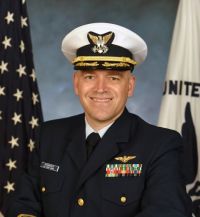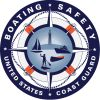Welcome to the CG-BSX Web Site
 |
 |
 |
|
Captain Brent Schmadeke |
The Chief Director’s Office provides administrative, management, and program resource support to enable the Coast Guard Auxiliary to efficiently carry out its assigned missions and authorized activities. It collaborates with other Coast Guard Headquarters program managers, National Auxiliary leadership, and regional Director of Auxiliary (DIRAUX) offices to enable the Coast Guard’s volunteers to:
· Promote and improve Recreational Boating Safety;
· Provide a diverse array of specialized skills, trained crews, and capable facilities to augment the Coast Guard and enhance safety and security of our ports, waterways, and coastal regions;
· Support Coast Guard operational, administrative, and logistical requirements.
The Chief Director’s Office is the Auxiliary’s primary Headquarters advocate and champions the Auxiliary’s ability to support:
· U.S. Coast Guard Auxiliary Policy Statement
· National Recreational Boating Safety Program Strategic Plan
· U.S. Coast Guard Auxiliary Strategic Plan
· U.S. Coast Guard Assistant Commandant for Prevention Policy Strategic Plan
In striving to support these plans, the Chief Director’s Office tries to adhere to the following principles as a framework for its strategic objectives:
a. Administrative and program management processes should be streamlined so Auxiliarists focus on support of the Auxiliary Strategic Plan, experience greater satisfaction from direct engagement with the Coast Guard through authorized Auxiliary activities, and convey greater support of the National Recreational Boating Safety Program Strategic Plan.
b. Opportunities should be identified for major programmatic cost avoidances and savings so that the limited program resource base can be reinvested toward tools and programs that benefit a broader range of Auxiliarists.
c. Opportunities should be identified for the reduction of Auxiliarists’ out-of-pocket expenses so their limited personal resources can be focused on meaningful and distinct tools needed for Auxiliary membership.
d. Opportunities that promote organizational growth and provide greater opportunities to attract citizens from all segments of society should also be identified, considered, and acted upon with a bias toward creating a more viable Auxiliary workforce that reflects the American public.
The Chief Director’s Office provides direct administrative and programmatic support to:
· Regional DIRAUXs and their staffs;
· Other Coast Guard Headquarters staff elements and program managers.
· National Executive Committee (NEXCOM);
· Assistant National Commodores, Directorate Chiefs, and their staffs;
Through its provision of such support to these customers, Chief Director’s Office also indirectly serves and collaborates with:
· The maritime public, particularly America's recreational boaters;
· Other federal, state, and municipal maritime agencies;
· Commercial and private organizations that share maritime interests.
While the Coast Guard receives a remarkable return on its Auxiliary investment, the Auxiliary program is not immune from budgetary/human resource reductions.
The Auxiliary’s ability to contribute to the Coast Guard’s missions is virtually limitless. Conversely, the ability of the Coast Guard to appropriately leverage the time, treasures, and talents of its volunteer workforce is limited by its capacity to effectively administer and manage its programs. A constructive balance should be maintained between Auxiliary self-administration and direct Coast Guard oversight. The Chief Directors Office should remain flexible and responsive to the ever-changing needs and expectations of the chain of command, chain of leadership, and needs of the Service. Chief Directors Office should remain most sensitive to:
a. Safety and Security: Any programmatic deficiency that places any number of Auxiliarists at personal risk (operationally, privacy, health and well-being, etc.);
b. Emergent needs of the Coast Guard, as directed by the Commandant and CHDIRAUX;
c. Emergent needs of DIRAUXs;
d. Headquarters program managers;
e. Auxiliary policies, instructions, and guidance that have universal applicability to the entire Auxiliary organization;
f. Unique “niche” programs that provide new or different levels of support to the Coast Guard.